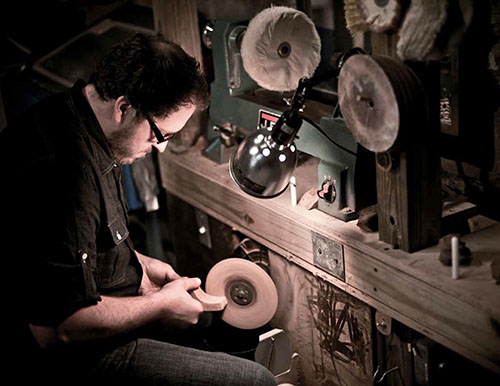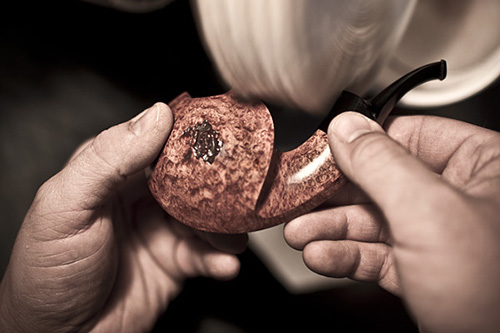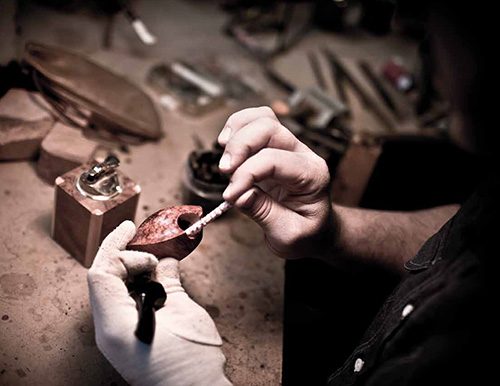Todd M Johnson Pipes: not a utilitarian object.
Todd Johnson’s life changed because of a friend’s smoke of choice.
Johnson was in college when he decided he wanted to make a friend a pipe for his graduation present. Johnson was already proficient with tools and woodworking. His father had a shop Johnson Pipes 9 where Johnson helped out on high-end pre-1948 cars and trucks.
Johnson figured he could fashion a pipe, given that much of the car work he’d done was creative, sculptural work. Even though Johnson had never held a pipe, he made one from walnut, with a flat-bottomed bowl and wooden stem. His friend loved it. So did Johnson.
He made a few more for friends and later sold them in local shops. By 2001 his reputation was such that he was invited to visit with a master pipe maker to learn the traditional handcrafting of pipes in the Danish style.
Now, more than a decade later, he’s grown and honed his craft into something unique, turning Todd M. Johnson into one of the world’s premier custom pipe makers.
“I’m dedicated to this not only as a creative endeavor,” Johnson says, “but also toward preserving the history of high-grade handmade pipes—and passing that along.”
Johnson has trained a number of accomplished pipe makers in the United States, just as he was trained. He has contributed to the newfound respect that the world has for the United States as a place for high-quality handcrafted pipes.
“I wouldn’t necessarily say that US pipe makers have developed their own style,” Johnson says, “but…we’ve raised the bar for expectations of quality.” Johnson has developed a signature, expressive style that shows a depth of insight and maturity. This is tied to his process, which is forged from a desire for excellence over efficiency.
The process begins with his annual trip to Italy, where Johnson hand selects each piece of briarwood he wants to use. (Briarwood is from the root of the European tree heath, which has traditionally been used to make pipes.) He puts that aside for two years.
This gives Johnson a block of wood from the briar’s burl, the round knotty growth from which the pipes are shaped, that has specific qualities (such as grain patterns) that speak to him. The piece’s individual characteristics serve as the pipe’s inspiration. He then takes that block directly to the shaping wheel. “It’s a very rough, somewhat violent process.” Johnson says. He describes the process as bringing the shape out of the block instead of forcing a shape upon it.
As the rough shape of a pipe takes form, so begins the more delicate process to hone, shape, and align the grain. He then cuts the mouthpiece from German ebonite (basically a solid rod of vulcanized rubber). The pipe is stained in seven steps and finally buffed and polished with carnauba wax.
Johnson makes 120 pieces a year—plenty, given that his work goes for three to twelve thousand dollars, and up. Most of his sales come from the Chinese market, where customers have a centuries old culture of appreciating, and paying for, fine craftsmanship.
“It’s not a utilitarian object,” Johnson says. “The Chinese understand this because of their tea culture: sitting, reflecting, contemplating, sharing with friends, enjoying some of the finer things in life. That’s where my work fits in.”



